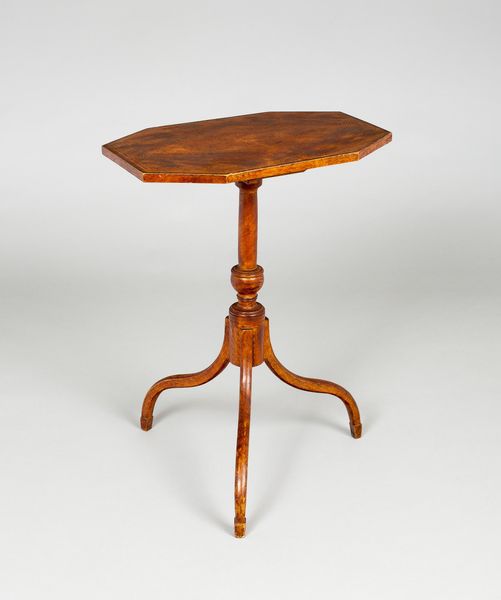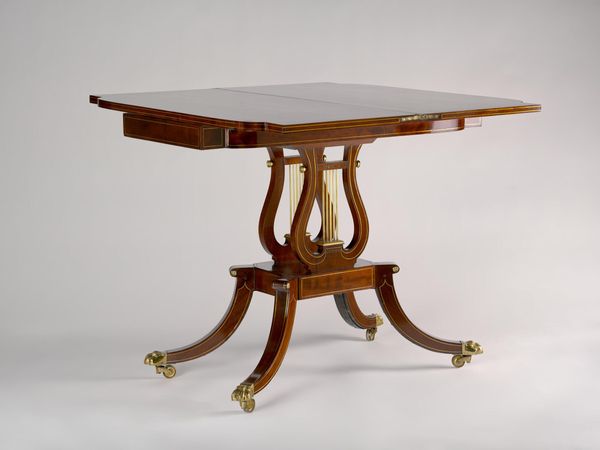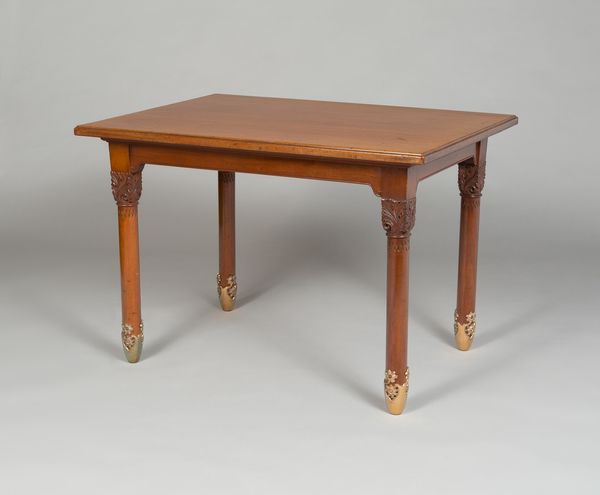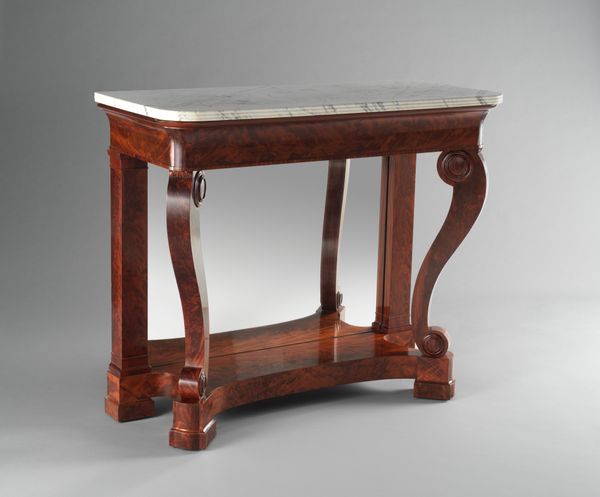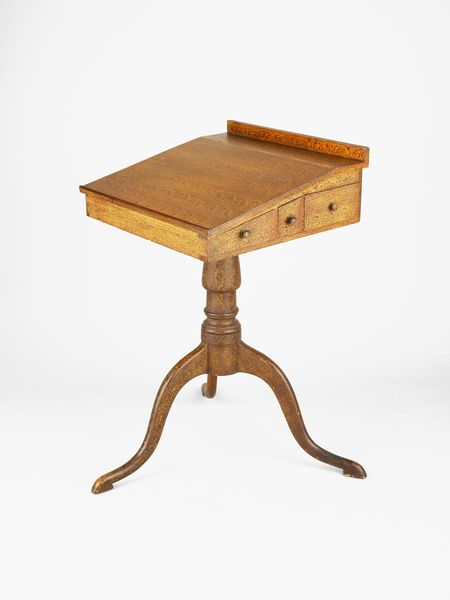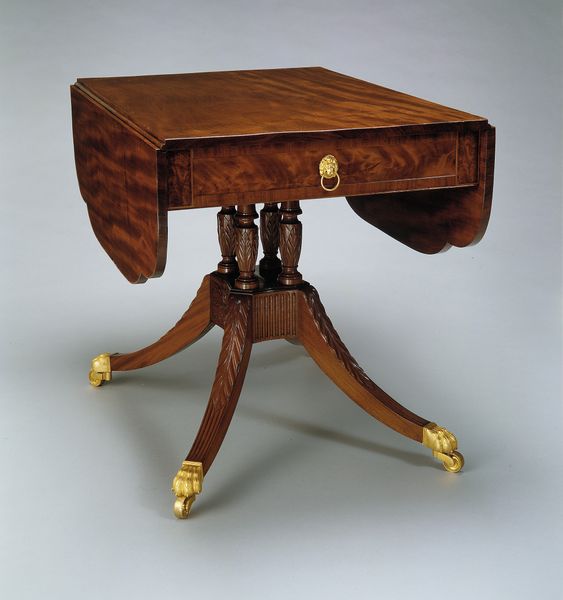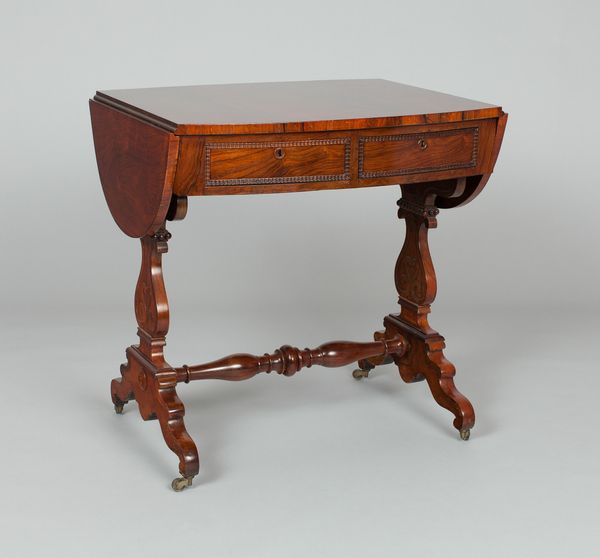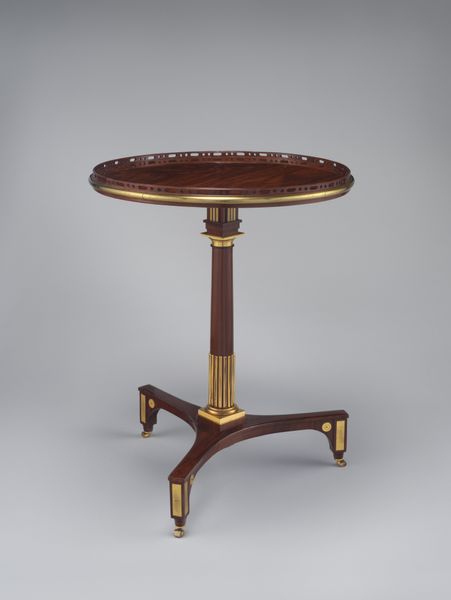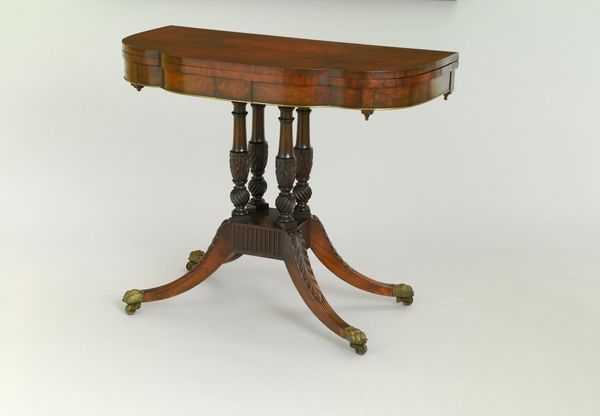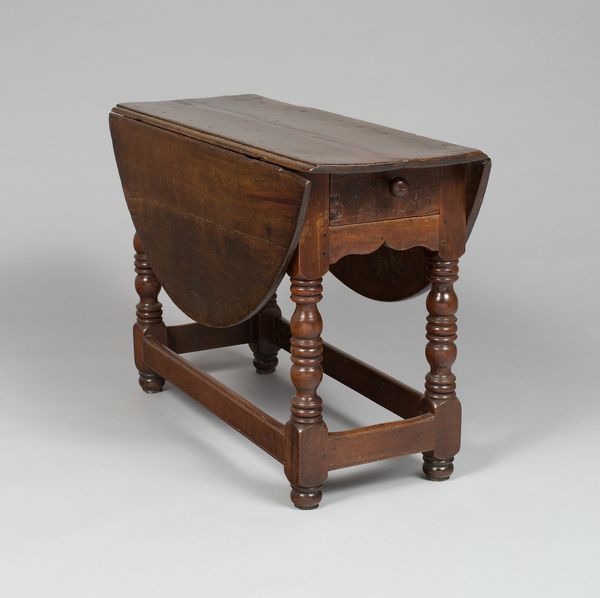
metal, wood
#
neoclacissism
#
metal
#
furniture
#
wood
#
decorative-art
Dimensions: 73.3 × 91.5 × 46 cm (28 7/8 × 36 × 18 1/8 in.)
Copyright: Public Domain
Curator: It’s lovely isn’t it? This “Card Table” dates from between 1815 and 1824 and currently resides here at the Art Institute of Chicago. We don't know who made it. Its construction primarily involves wood and metal. Editor: My immediate impression is one of unexpected delicacy. Given the era, I expected something heavier, more imposing, yet the lines are so graceful and almost… musical. Curator: Musical indeed! Note the lyre motif supporting the tabletop, a common neoclassical symbol harking back to ancient Greece, associating the owner of this table with culture, refinement, and the arts. We must remember that furniture like this played a vital role in self-fashioning and performed identities of the elite during that period. Editor: The lyre definitely whispers of Apollo and intellectual pursuits. And look closer, the legs ending in lion’s paw feet. A fascinating blend of refinement and subtle power! Does the material choice tell us something about shifting tastes at this time? Curator: Absolutely! The combination of richly figured wood and metallic ornamentation indicates a move toward more visually dynamic interiors. This wasn't just about functional furniture. This table reflected the owner's status, sophistication, and their engagement with contemporary social and cultural trends. Spaces reflected a desire to emulate an ideal and assert a cultivated public image. Editor: The dark tabletop encourages focused attention. It suggests evenings illuminated by candlelight, concentrated thought and playful, skillful manipulation. One imagines the players in deep thought and engaged in competitive yet elegant activities. The image of cards as social currency, an intricate play of symbolic and literal exchange! Curator: A game within a game, metaphorically speaking. Considering that gambling, specifically card play, often carried substantial socio-political implications regarding wealth and status in that time period, I’d say this object had as much, or more, cultural importance, as decorative. Editor: It really makes you think, doesn't it? Symbols are everywhere, speaking silently across time about aspirations, values, and social complexities. Curator: Indeed. This isn't merely an object but a window into the lives, games, and the public projections of those who once gathered around it.
Comments
No comments
Be the first to comment and join the conversation on the ultimate creative platform.



